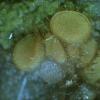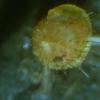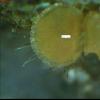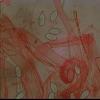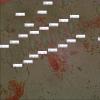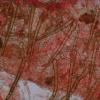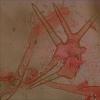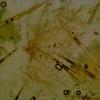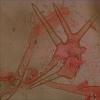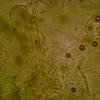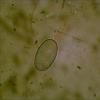
15-12-2025 15:48
 Danny Newman
Danny Newman
Melanospora cf. lagenaria on old, rotting, fallen

15-12-2025 15:54
 Johan Boonefaes
Johan Boonefaes
Unknown anamorph found on the ground in coastal sa

15-12-2025 21:11
 Hardware Tony
Hardware Tony
Small clavate hairs, negative croziers and IKI bb

15-12-2025 07:09
 Danny Newman
Danny Newman
indet. Rutstroemiaceae sp. on unk. fallen leavesMc

15-12-2025 07:05
 Danny Newman
Danny Newman
Pseudosclerococcum golindoi (det: Zotto)near Cosb

15-12-2025 11:49
 Danny Newman
Danny Newman
ITS sequences from the following two collections B

15-12-2025 12:34
 Danny Newman
Danny Newman
indet. Rhytismataceae on oak leafnear Purchase Roa

09-12-2025 12:06
 Andgelo Mombert
Andgelo Mombert
Bonjour,Je recherche l'article concernant Hypobryo
 Found on horse dung.
Found on horse dung.Fruitbody cup shaped diameter of the toplayer 2.21 mm.
At first the colour is yellow but at the bottom orange, later changing to orange totally.
Hairs are pale brown, septate and pointed with 3-5 armed stellate hairs on lower part of excipulum.
Paraphyses not very much swollen at apex and filled with orange granules.
Spores ellipsoid average 19.87-21.78x10.48-11.52 um, but also extreme measures of 25.50-26.99x12.22-13.02 um.
Measurement of hairs 356.29-464.00x20.33-22.60 um
Oui, il s'agit très probablement de Cheilymenia stercorea (Pers.: Fr.) Boud. Pour en être certain, il manque la description de l'ornementation sporale (avec quelques fines rides), à observer dans le bleu coton lactique, à chaud. Les dimensions sporales, les poils et le substrat, plaident pour cette espèce.
Cordialement
René

Thank you for the information, I have tried to get an ornamentiation on the spores in warm cotton blue but there were no results.
The only thing observed in cotton blue was the blue colouring of the excipulum and a better presentation of the orange granules in the paraphyses.
I have also found a white to yellow smalle disk (diameter 2.21 mm) surrounding the Cheilymenia and forming a plaque. This is probably Cropotus Granuliformis and only was seen together with C. Stercorea.
Il est possible que vous n'ayez pas pu observer l'ornementation sporale, en effet celles-ci sont très fines et souvent difficiles à observer. Par ailleurs, il faut impérativement des ascospores matures, un « bon » BC lactique, un chauffage jusqu'à ébullition et bien sûr une observation au plus fort grossissement.
S'agissant de la deuxième espèce, il est possible, même probable, qu'il s'agisse d'un Coprotus. Vous aurez relevé la formation d'une bulle de gaz - DE BARY bubbles – dans les ascospores. Toutefois, les photos des éléments microscopiques du haut et à droite de l'apothécie, appartiennent sans aucun doute à une espèce du genre Cheilymenia.
Amicalement
René
?
